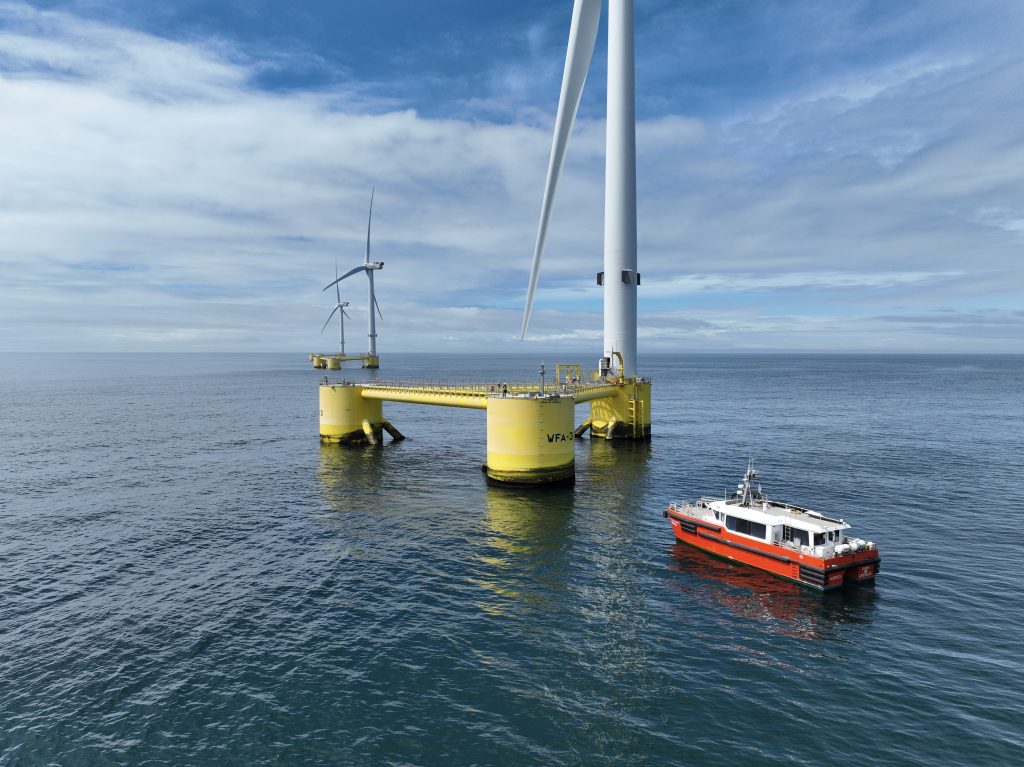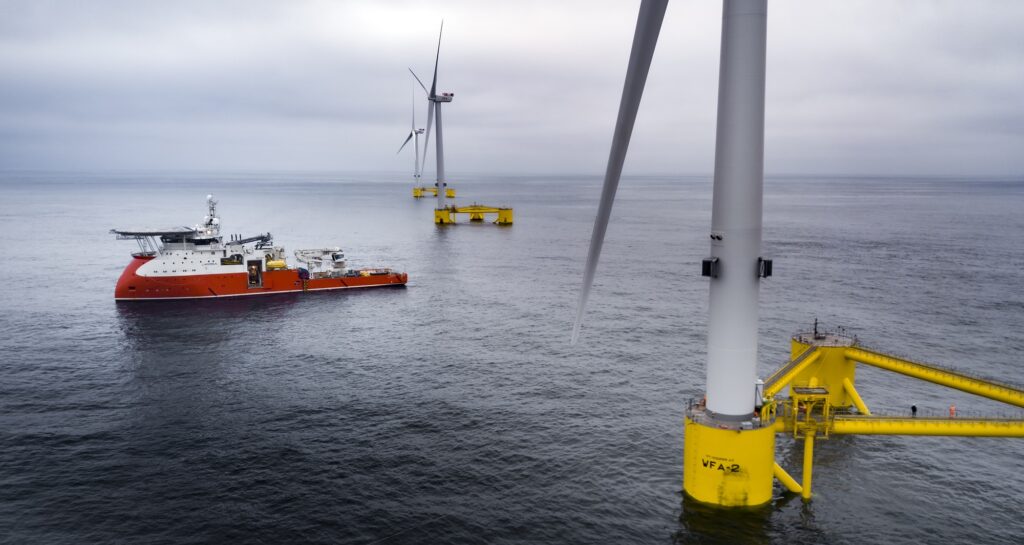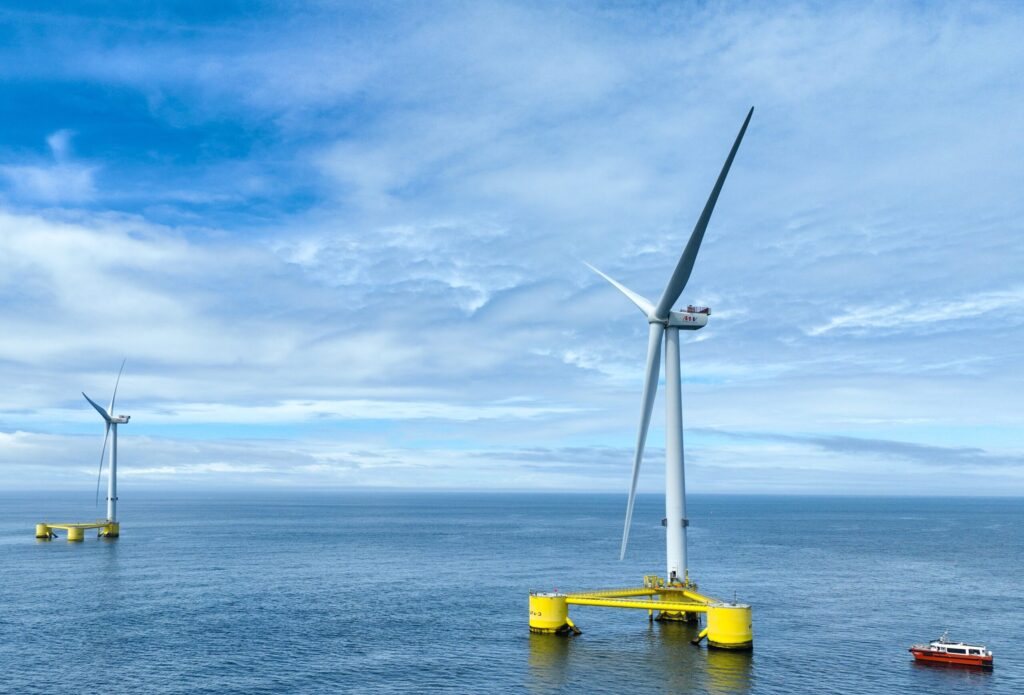In the coming decade (towards 2035), commercial floating wind projects are expected to be built at gigawatt scale, an order of magnitude greater than current 10MW to 100MW demonstrator projects.
This study has been commissioned to showcase likely installation methods for gigawatt scale Floating Offshore Wind (FOW). The study starts with a ‘base case’, which explores in detail how to pre-install the mooring components, tow out the commissioned FOWTs, connect the moorings, and install the cables. The base case installation methodology has been developed by scaling up current practice for demonstrator floating wind arrays, which itself is built on oil and gas and fixed wind experience.
Next, different options for mooring and cable installation are compared with the base case benchmark to explore the wider technology landscape. If there are unresolved bottlenecks, these need to be flagged early to inform supply chain growth, project front end engineering design (FEED) scoping, and technology development support activities.
This report presents a public domain summary of more detailed reports prepared for the FOW CoE developer partners.





